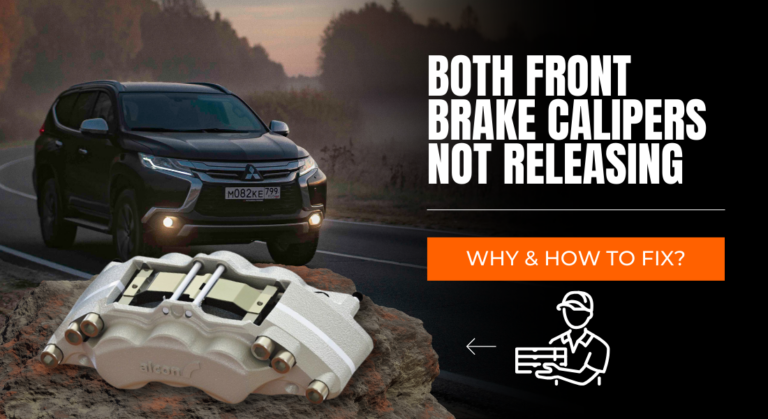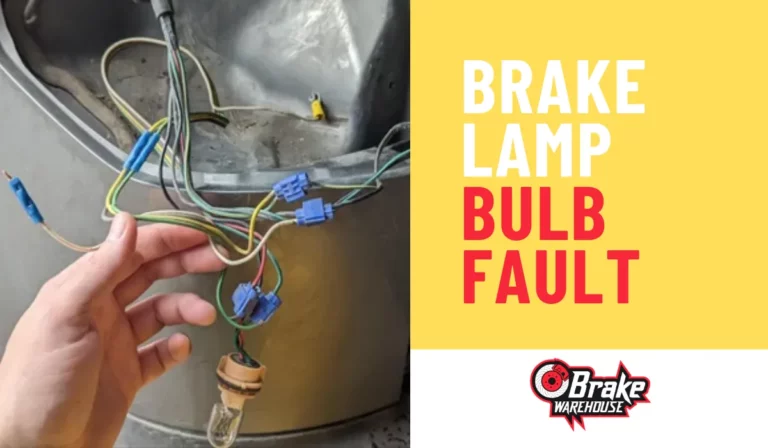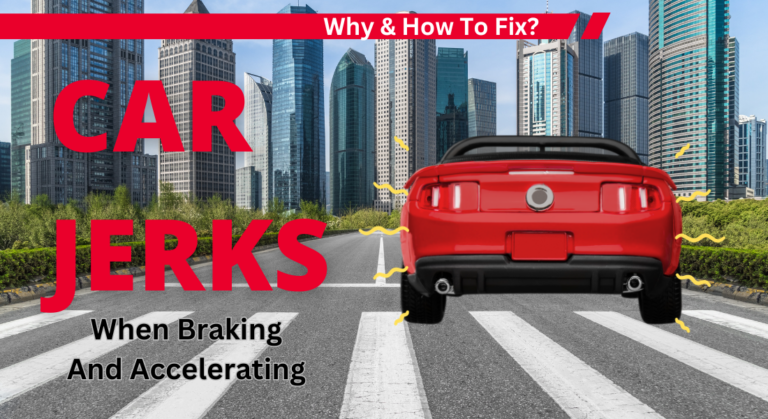What Causes Brake Pedal Pulsation ABS System? – Fix Now
Car safety features include brakes, which play a crucial role in ensuring safety on the road. Any unusual sensation while using them should be taken seriously. The brake pedal is typically firm when pressed, but if it feels soft and spongy, it could indicate a problem with the braking components.
One of the most alarming sensations when using the brake pedal is pulsation. This occurs when you feel a series of pulses or vibrations while applying pressure to the pedal. Although this is typical for cars equipped with ABS, it could indicate a critical issue that needs to be addressed promptly.
Continue reading to discover the causes behind pulsating brake pedals while using ABS and the potential solutions.

Brake Pedal Pulsation On ABS System: 4 Reasons With Fixes
Brake pedal pulsation is usually described as throbbing feedback from the brake pedal when depressed. The Anti-lock braking system (ABS), which aids the driver when braking, is usually one of the causes. When this system is active, you can feel these pulses on the brake pedal as the ABS modulates brake pressure.
The pulses are caused by this high-frequency modulation, especially when braking hard. However, the pulsations may have other causes besides activation. Some of these causes are related to the ABS, while others are to the braking system. Following are some of the reasons the brake pedal has pulsations.
1. Failing ABS Sensor
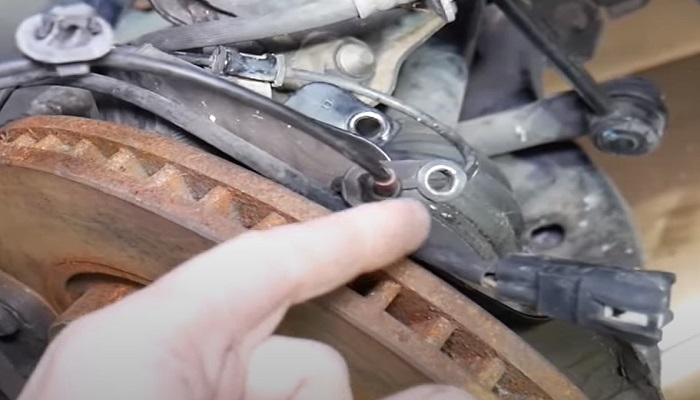
A failing ABS sensor is one of the causes of the brake pedal pulsation. ABS sensors monitor the wheel speed and forward that information to the ABS module computer. This information is necessary when the vehicle is braking and used to prevent locking and skidding.
Most sensors are installed in the disc brake support where debris, like metal debris from brake pads, contaminates it. When the sensor has collected this debris, it’s unable to give accurate readings to the ABS computer. In this instance, you can feel the brake pedal pulsation.
Solutions
Most ABS sensors have a lifespan of between 30,000 and 50,000 miles, depending on the driving conditions. Replace the ABS sensor if the vehicle is already within this mileage. Follow the steps below to replace;
- Step 1. Consult your user manual to learn where the ABS sensor is in your vehicle.
- Step 2. Depending on the vehicle, you may need to remove the wheels.
- Step 3. Remove the sensor by unscrewing the bolt that holds it in place.
- Step 4. Clean the mounting hole before installing the new sensor.
- Step 5. If you had removed other brackets or wheels earlier, reinstall them.
Read Also: Can Worn Brake Pads Cause ABS Light to Come On?(Find Now)
2. Worn ABS Wiring
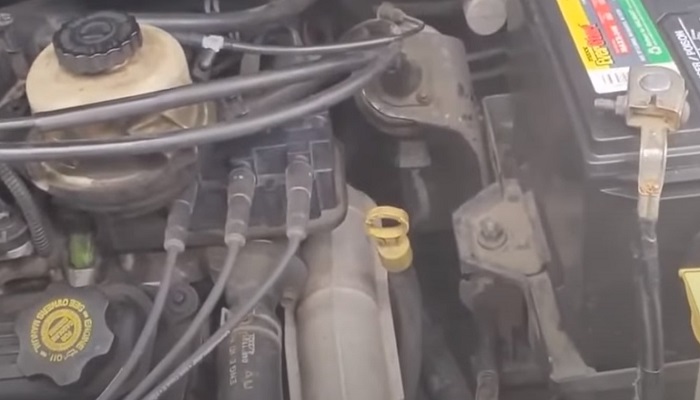
Worn ABS wiring can also cause the pedal to pulsate when depressed. The wiring connects various parts of the ABS to the ABS computer. This connection allows the system to communicate through signals and aid in braking when needed.
When the wiring or any of the connectors are faulty, there is a difference in the signal strength, especially if it’s from the sensor. The signal difference causes the ABS valve to cycle on the wheels, causing pulses.
Solutions
Worn ABS wiring should be replaced rather than repaired. Repairing, especially through soldering, can also create differences in signals creating more problems with the system.
In most cases, the faulty wiring is between the ABS sensor and the computer since their locations expose them to much road cruelty. In this instance, the installation steps are similar to the one mentioned earlier on replacing the sensor.
Below are the simple steps you follow;
- Step 1. Locate the ABS sensor
- Step 2. On most vehicles, you will need to remove the wheel for better access to the sensor
- Step 3. Unscrew the sensor
- Step 4. Remove its wiring by unclipping it on any parts it’s clipped. Observe how the wires are routed when removed
- Step 5. Install the new sensor and secure it with its bolt
- Step 6. Route the wire the same way the old one was routed
- Step 7. Repeat on each wheel with a faulty sensor
Read Also: What Causes Brakes Pulsating When Stopping? – Fix Now
3. Warped Rotors
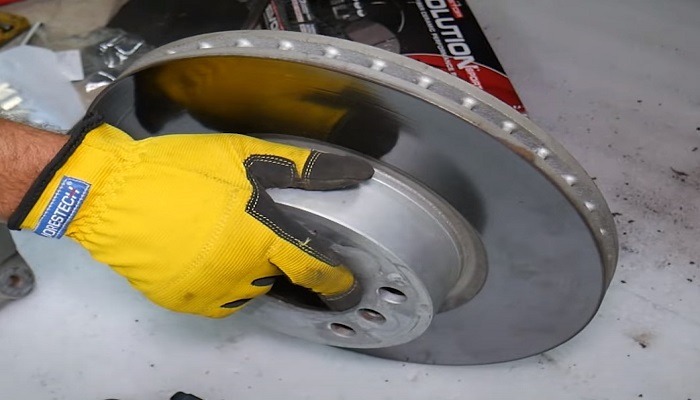
As mentioned earlier, the brake pedal pulsation is not caused by the ABS only but also by other parts. Warped rotors are one of the causes the driver may feel the pulses on the pedal. These circular disks are on each wheel, and when the vehicle brakes, the brake pads press against them, slowing the car.
Brake rotors become warped if they overheat, especially when the vehicle brakes hard. Improper maintenance or manufacturing defects can also cause these discs to warp.
The uneven surface on the rotors causes the difference when the brake pads press on them. This difference then translates to the brake system through to the pedal where the driver can feel them.
Read Also: A Guide To Replacing Your Vehicle’s Brake Rotors
Solutions
Warped rotors can be replaced or fixed by resurfacing them by scrapping the old metal if they are still thick enough. Also, the success of the resurfacing process depends on how damaged the rotors are.
However, the rotors must be removed from the vehicle to perform the solutions mentioned earlier. Also, the replacement should include brake pads, which are usually unevenly worn out. If not replaced, they can affect the new rotors.
Follow the steps below to replace;
- Step 1. Raise the car and remove the wheel after loosening the lug nuts.
- Step 2. Remove the calipers by removing the bolts and spring clips holding them.
- Step 3. Remove the brake rotor and pads.
- Step 4. Take the rotors to a mechanic to be resurfaced.
- Step 5. Clean the mounting surface before installing the new or resurfaced rotors. Use a cleaner (our pick: WD-40 Contact Cleaner Spray.
- Step 6. Install the new rotors and pads.
- Step 7. Replace the calipers and any other mounting bracket you had removed earlier.
- Step 8. Install the wheel and secure it with the lug nuts.
- Step 9. Repeat the steps on each wheel that needs replacements.
- You can also hire a mechanic to replace the rotors for a price between $150 and $300 per axle.
Read Also: Why Is Brake Pad Rubbing On Rotor? – How To Stop!
4. Faulty Calipers
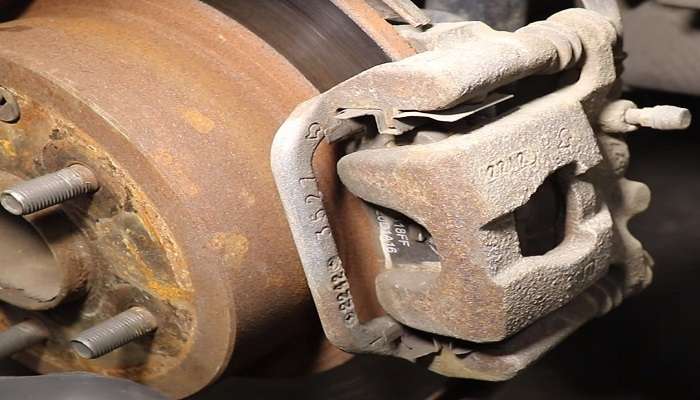
Faulty brake calipers are another reason the brake pedal may be pulsating. The calipers hold the brake pads and also guide them, allowing them to press on the rotors when needed.
Slide pins on the calipers allow the brake pads to work while still aligned to the rotor. If these pins are worn, the brake pads may touch the rotor at an angle, wearing unevenly and causing pulsations. Also, the calipers can shake on the badly worn pins, causing the pedal pulsations.
Read Also: No Brake Pressure After Changing Calipers: Here’s Why?
Solutions
Brake pins can be cleaned and lubricated, which should be done every time during brake maintenance. However, if they’re already worn out and not working, replace them with new ones.
Follow the steps below to achieve flawless replacement;
- Step 1. Lift the vehicle with a jack.
- Step 2. Remove the tire after removing the lug nuts.
- Step 3. Remove the bolts holding the calipers and pry them off the brake rotor.
- Step 4. Remove the pins from the brake pads. If they are stuck, use a fitting socket and a ratchet.
- Step 5. If your pins are not badly worn, clean them. Before cleaning, remove the pin boot.
- Step 6. Lubricate the holes where the pin goes using a lubricant of your choice.
- Step 7. Install the boots and install them on the calipers.
- Step 8. Now install the caliper over the brake rotors.
- Step 9. Install the tire and secure it with the lug nuts.
- Step 10. Bleed the brake system.
- Step 11. Taste the brakes in a test drive.
The following video shows how to clean slide pins.
FAQs
Following are the frequently asked questions on this topic
Can Air in the Brake System Cause Pedal Pulsation?
No. Air in the brake system doesn’t usually cause brake pedal pulsation but can decrease brake effectiveness. The brake pedal usually feels soft or spongy when the brake system has air but doesn’t pulsate.
How Much Does Repairing Brake Pedal Pulsation Cost?
The cost of repairing a brake pedal pulsation problem ranges between $100 and $500. The price depends on the cost of the part causing the pads to pulsate. However, the price may also vary with the repair shop.
Read Also: Are Brake Pad Retainer Clips Necessary? – Here’s The Answer
Bottom Line
Brake pedal pulsation is usually normal, especially on vehicles equipped with ABS. However, various problems can cause these vibrations and require immediate diagnosis and repair.
Some problems are easily fixed by following the steps described in the article. You should also consult your user manual for part numbers and more detailed steps specific to your model. However, if you’re not comfortable taking on the repair, don’t hesitate to hire a professional to handle it.

Meet Zayan, the mechanical genius behind the highly acclaimed brakes problems and solutions website. With over a decade of hands-on experience in the automotive industry, Zayan has become a trusted authority in the realm of brake systems.
His passion for cars, coupled with his expertise in solving complex brake-related issues, has earned him a devoted following of car enthusiasts, mechanics, and everyday drivers seeking reliable guidance.


